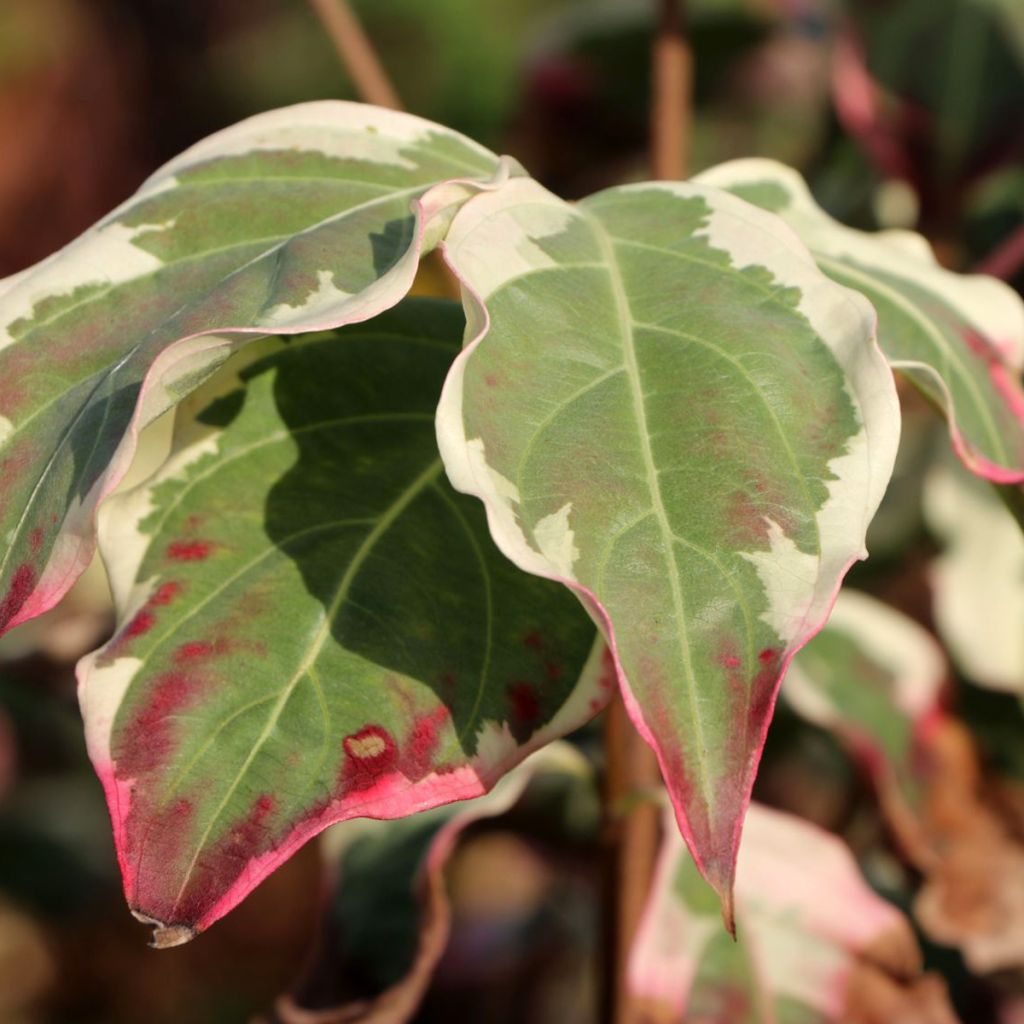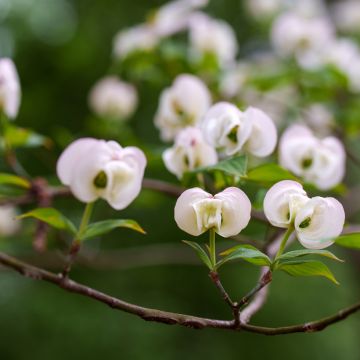

Cornus kousa China Dawn - Kousa Dogwood


Cornus kousa China Dawn - Kousa Dogwood


Cornus kousa China Dawn - Kousa Dogwood
Cornus kousa China Dawn - Kousa Dogwood
Cornus kousa China Dawn
Kousa Dogwood, Japanese Dogwood, Chinese Dogwood
Special offer!
Receive a €20 voucher for any order over €90 (excluding delivery costs, credit notes, and plastic-free options)!
1- Add your favorite plants to your cart.
2- Once you have reached €90, confirm your order (you can even choose the delivery date!).
3- As soon as your order is shipped, you will receive an email containing your voucher code, valid for 3 months (90 days).
Your voucher is unique and can only be used once, for any order with a minimum value of €20, excluding delivery costs.
Can be combined with other current offers, non-divisible and non-refundable.
Why not try an alternative variety in stock?
View all →This plant carries a 24 months recovery warranty
More information
We guarantee the quality of our plants for a full growing cycle, and will replace at our expense any plant that fails to recover under normal climatic and planting conditions.
Would this plant suit my garden?
Set up your Plantfit profile →
Description
The Cornus kousa 'China Dawn' is a selection that is mainly known for the variegation of its foliage. The beautiful green leaves are adorned with a visible cream-white margin that gives a bright aspect to the plant. In spring, the inflorescences appear in the form of four star-shaped white bracts, slightly overhanging the vegetation. The flowering fades after a few weeks, gradually giving way to beautiful round carmine-fuchsia berries, which ripen during a long hot summer. Very hardy and quite easy to grow, this beautiful shrub undoubtedly deserves its place in the garden, either as a standalone plant or within a large shrub border.
The Cornus belongs to the rather confidential family of Cornaceae, which, after several revisions of the botanical classification, now includes only the genera Cornus and Alangium. In nature, Cornus kousa is a small tree or large shrub, native to Japan, China, and Korea. Its architectural silhouette, formed by generally tiered and horizontal branches, gives it a very Japanese appearance. The botanical species has given rise to several horticultural varieties, the result of breeders' work.
This is the case with China Dawn, with its luminous green foliage variegated with white, which is very dense. The elliptical leaves, slightly wider towards the base, are pointed at the tip, while the margin of the leaf blade tends to undulate. The leaves are medium green with a relatively wide cream-white margin, which can even occupy nearly two-thirds of the surface on some leaves. This slow-growing shrub, which will reach approximately 2.50 m in height in ten years and will only exceed 3 m in optimal conditions, in mild climates, has a tabular habit, almost as wide as it is tall. From mid-May to late June, it produces white inflorescences, about ten centimetres in diameter. They consist of a greenish core that then slightly yellows, which is called a glomerule, as it is formed by small flowers clustered together to form this small central sphere. It is surrounded by four bracts arranged in a cross, which form a very decorative white star. Morphologically, these are transformed leaves, which are generally mistaken for flowers. In China Dawn, the bracts are oval, fairly wide, and rounded at the tip. Carried by upright peduncles, these very architectural inflorescences seem to float a few centimetres above the foliage. They add a good amount of whiteness that makes this shrub even brighter, especially if it is planted in partial shade. The flowers are followed by 2.5 cm in diameter fruits, red, similar to strawberries. The higher the summer temperatures, the more abundant the fruiting. The fruits are edible, fleshy, with a sweet flavour, but without any real gustatory interest. Decorative, they add an ornamental appeal at the end of the season, contrasting nicely with the variegated foliage. The foliage takes on warm red and orange colours in autumn before falling to the ground.
Plant habit
Flowering
Foliage
Botanical data
Cornus
kousa
China Dawn
Cornaceae
Kousa Dogwood, Japanese Dogwood, Chinese Dogwood
Cultivar or hybrid
Other Flowering Dogwood
View all →Planting and care
Native to Japan, Korea, and China, Cornus kousa thrive in continental climates and temperate zones. Extremely cold temperatures during winter can result in absent or reduced flowering. Long, hot summers promote fruit ripening. However, this bush is very hardy and can withstand frost down to at least -15°. It tolerates sunny exposures in areas with moderately hot summers. In hot regions, it should be planted in a sheltered spot away from scorching sun.
It prefers deep, fertile, well-drained soil that is slightly acidic or neutral, without being a true heather soil plant, but coexisting well with them. It greatly appreciates the thick humus of deciduous undergrowth. It can tolerate clay soils as long as it is protected from excessive moisture, especially in winter. Plant it in a deep hole lined with clay pellets, coarse sand, or gravel to ensure good drainage if necessary, in a very compact soil. Any good, balanced, and loamy garden soil is suitable for it. At planting, provide it with compost and leaf mould. Mulching with pine bark will help maintain moisture in summer and promote soil acidity.
Pruning is not obligatory, but can be done at the end of winter to remove diseased or dead wood and crossing branches in order to maintain an attractive habit. During the first two years after planting, regular watering is necessary in summer, afterwards, it can manage on its own.
Planting period
Intended location
Care
Planting & care advice
This item has not been reviewed yet - be the first to leave a review about it.
Similar products
Haven't found what you were looking for?
Hardiness is the lowest winter temperature a plant can endure without suffering serious damage or even dying. However, hardiness is affected by location (a sheltered area, such as a patio), protection (winter cover) and soil type (hardiness is improved by well-drained soil).

Photo Sharing Terms & Conditions
In order to encourage gardeners to interact and share their experiences, Promesse de fleurs offers various media enabling content to be uploaded onto its Site - in particular via the ‘Photo sharing’ module.
The User agrees to refrain from:
- Posting any content that is illegal, prejudicial, insulting, racist, inciteful to hatred, revisionist, contrary to public decency, that infringes on privacy or on the privacy rights of third parties, in particular the publicity rights of persons and goods, intellectual property rights, or the right to privacy.
- Submitting content on behalf of a third party;
- Impersonate the identity of a third party and/or publish any personal information about a third party;
In general, the User undertakes to refrain from any unethical behaviour.
All Content (in particular text, comments, files, images, photos, videos, creative works, etc.), which may be subject to property or intellectual property rights, image or other private rights, shall remain the property of the User, subject to the limited rights granted by the terms of the licence granted by Promesse de fleurs as stated below. Users are at liberty to publish or not to publish such Content on the Site, notably via the ‘Photo Sharing’ facility, and accept that this Content shall be made public and freely accessible, notably on the Internet.
Users further acknowledge, undertake to have ,and guarantee that they hold all necessary rights and permissions to publish such material on the Site, in particular with regard to the legislation in force pertaining to any privacy, property, intellectual property, image, or contractual rights, or rights of any other nature. By publishing such Content on the Site, Users acknowledge accepting full liability as publishers of the Content within the meaning of the law, and grant Promesse de fleurs, free of charge, an inclusive, worldwide licence for the said Content for the entire duration of its publication, including all reproduction, representation, up/downloading, displaying, performing, transmission, and storage rights.
Users also grant permission for their name to be linked to the Content and accept that this link may not always be made available.
By engaging in posting material, Users consent to their Content becoming automatically accessible on the Internet, in particular on other sites and/or blogs and/or web pages of the Promesse de fleurs site, including in particular social pages and the Promesse de fleurs catalogue.
Users may secure the removal of entrusted content free of charge by issuing a simple request via our contact form.
The flowering period indicated on our website applies to countries and regions located in USDA zone 8 (France, the United Kingdom, Ireland, the Netherlands, etc.)
It will vary according to where you live:
- In zones 9 to 10 (Italy, Spain, Greece, etc.), flowering will occur about 2 to 4 weeks earlier.
- In zones 6 to 7 (Germany, Poland, Slovenia, and lower mountainous regions), flowering will be delayed by 2 to 3 weeks.
- In zone 5 (Central Europe, Scandinavia), blooming will be delayed by 3 to 5 weeks.
In temperate climates, pruning of spring-flowering shrubs (forsythia, spireas, etc.) should be done just after flowering.
Pruning of summer-flowering shrubs (Indian Lilac, Perovskia, etc.) can be done in winter or spring.
In cold regions as well as with frost-sensitive plants, avoid pruning too early when severe frosts may still occur.
The planting period indicated on our website applies to countries and regions located in USDA zone 8 (France, United Kingdom, Ireland, Netherlands).
It will vary according to where you live:
- In Mediterranean zones (Marseille, Madrid, Milan, etc.), autumn and winter are the best planting periods.
- In continental zones (Strasbourg, Munich, Vienna, etc.), delay planting by 2 to 3 weeks in spring and bring it forward by 2 to 4 weeks in autumn.
- In mountainous regions (the Alps, Pyrenees, Carpathians, etc.), it is best to plant in late spring (May-June) or late summer (August-September).
The harvesting period indicated on our website applies to countries and regions in USDA zone 8 (France, England, Ireland, the Netherlands).
In colder areas (Scandinavia, Poland, Austria...) fruit and vegetable harvests are likely to be delayed by 3-4 weeks.
In warmer areas (Italy, Spain, Greece, etc.), harvesting will probably take place earlier, depending on weather conditions.
The sowing periods indicated on our website apply to countries and regions within USDA Zone 8 (France, UK, Ireland, Netherlands).
In colder areas (Scandinavia, Poland, Austria...), delay any outdoor sowing by 3-4 weeks, or sow under glass.
In warmer climes (Italy, Spain, Greece, etc.), bring outdoor sowing forward by a few weeks.
































































